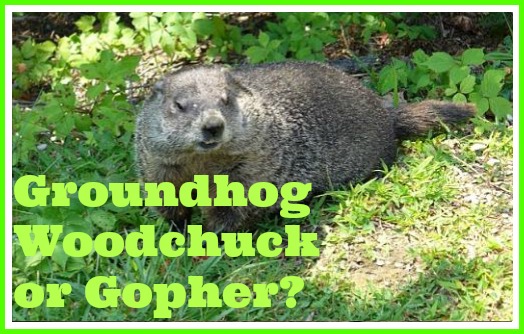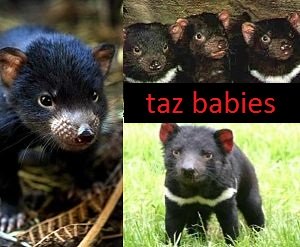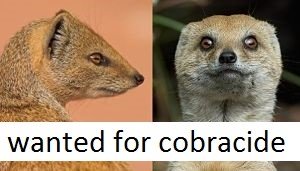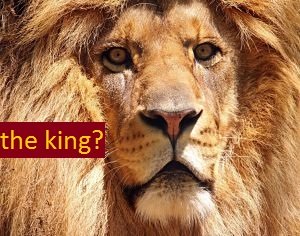Groundhog Baby
 Portrait of a Baby Groundhog
Portrait of a Baby GroundhogThe life of a groundhog baby starts underground in the burrow that the mother groundhog has dug.
She prepares a birthing den and lines it with soft grasses to keep her and her new family comfortable.
The burrow is also called a cette (pronounced "set"), and may be up to 80 feet long, but the birthing chamber is usually only about three times the mother's length, retaining warmth and helping her to keep her babies close.
A mother groundhog may have up to 10 babies, but 3 to 6 is the most common litter size. Baby groundhogs are called "pups", "kits" or sometimes "cubs".
When they are full grown, they may be called woodchucks, or whistlepigs.
Newborn baby woodchucks are pink, completely hairless, and only about the size of a matchbox car. Their ears are folded closed and their eyes don't even have lids to open yet.
The only senses that are working in a newborn groundhog are touch and smell.
The babies are very sensitive to temperature, and huddle next to their mother for warmth. If they should wander a little, they can find their way back to the nest by scent, and by the warmth given off by the bodies of their littermates and mother.
They make soft squeaking noises, and will cry louder if they are hungry or cold, so that their mother will know and tend to them.
The pups consume only mothers milk for the first 3 weeks, and then may begin to dig around in the burrow and chew on things they uncover, learning the skills of foraging. At 4 weeks their eyes open and they are fully furred too.
Their mother will bring soft foods like flowers and grass into the burrow for the youngsters to sample.
The biggest predators of baby groundhogs are snakes, who can detect their sounds and movements through the ground and will come right through the front door of the burrow.
Gopher snakes found in the deserts of the Southwest feed on young groundhogs, rabbits, prairie dogs and of course, gophers.
Although baby groundhogs are no match for a full grown Gopher snake, mother groundhogs have been known to defend their babies bravely, and even kill and eat invading snakes.

As the little woodchucks grow, they slowly begin to leave the nest and explore for short periods.
They are extremely alert, and will dive back into the den at their mother's warning, which is a sharp, high-pitched whistle.
At about 44 days they are weaned, and can survive without mothers milk.
The mother groundhog starts to move them out of her den, and before they are even 2 months old, the little groundhogs have dug their own burrows and started living alone.
groundhog babies

The only time groundhogs socialize is during mating season, in early spring, but many males will actually leave their burrows in February and March to visit the dens of females in their territory.
They may cruise around for a day or two, spending a few minutes at a time getting acquainted, and then go back to their burrows for another few weeks of hibernation.
This unusual activity, may well be the inspiration for the whole "Groundhog day" tradition, but it actually serves as a bit of a pre-courtship, which speeds up the whole process come spring.
The idea is that baby groundhogs need lots of time to get ready for their first winter, and timing mating just right is critical for the survival of the species. Too early, and their might not be enough forage for the baby groundhogs as they wean, too late and they won't be strong enough to last the winter.
Nevertheless, when spring comes around, males may still fight over the attention of local females. They will whistle and shriek and grab each other by the scruff, shaking mightily. Fights are not usually serious, though, and mating is usually a quick event as well.
The female is pregnant for about 32 days and gives birth to an average of 3 to 5 babies. Groundhog babies are called pups. The pups are only a few ounces when born. They are hairless, with closed eyes and ears, and are completely helpless.
The new pups grow very rapidly, and are weaned at about 5 weeks. They may move just a few yards away from the family sette, and dig their own burrow at just 6 weeks old. By the time they are 2 months old, they have moved off and are completely on their own.

a few more groundhog Baby facts
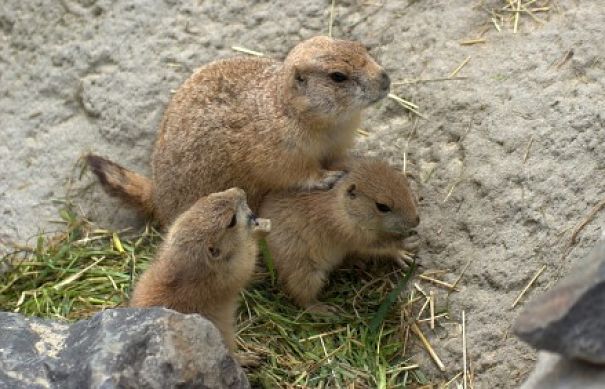
- A groundhog baby is called a "pup", a "kit" or even a "cub"
- Baby groundhogs are raised by their mother
- A newborn groundhog is less than 4 inches long
- Groundhog babies are born completely helpless
- Groundhogs and woodchucks are just different names for the same animal
see more animal extreme closeups
Recent Articles
-
African Animals - Animal Facts Encyclopedia
Oct 11, 16 10:27 PM
African Animals facts photos and videos..Africa is a wonderland for animal lovers, and a schoolroom for anyone who wants to learn about nature, beauty and the rhythm of life -
Baboon Facts - Animal Facts Encyclopedia
Oct 11, 16 10:26 PM
Baboon facts, photos, videos and information - Baboons are very distinctive looking monkeys with long, dog-like snouts and close set eyes. -
Great Apes Facts - Animal Facts Encyclopedia
Oct 11, 16 10:25 PM
Great apes facts, photos and videos..Human beings did not evolve from chimpanzees, modern chimps and gorillas do not appear in the fossil records until much more recently than homo sapiens..
